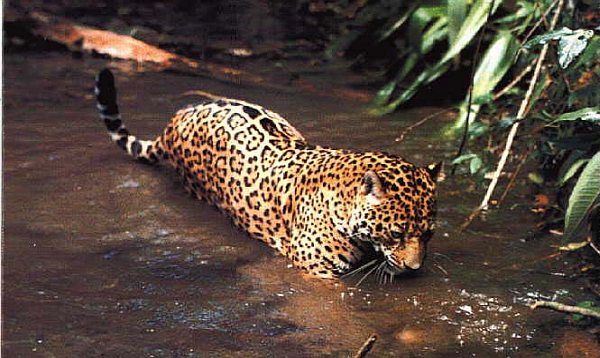Campeche, Mexico - Although they are now in danger of extinction, in a 10 square mile area around Terminos Lagoon in southeastern Mexico, there are still jaguars to be found.
The surprising discovery was made in the process of a study to find out whether rural inhabitants in the states of Tabasco and Campeche had in their possession any fangs or skins from jaguars that had been killed in recent years.
But now the study’s goal has changed to determining how many jaguars actually live in the border region straddling the two states.
The biggest jaguar population is found in the Campeche municipalities of Champoton, Sabancuy, and Palizada, towns surrounded by the Terminos Lagoon that flows into the Caribbean Sea across from the island of Cuidad del Carmen.
Thanks to the international Wildlife Conservation Society, the National Commission of Protected Natural Areas, or Conanp, and the Autonomous Juarez University of Tabasco, or UJAT, in recent years photos have been snapped not only of jaguars but also of ocelots and deer in some rural communities of Palizada in Campeche.
In a geographical area covering 5,400 acres, the UJAT researcher Mircea Gabriel Hidalgo and a number of students have discovered that the jaguar population continues to reproduce despite being an endangered species.
 |
"At first we looked for dead animals or those that people here might have killed in the last 10 years. We wanted them to show us skins and skulls of the felines, but what we found were live jaguars," Hidalgo said.
At first the idea was to look for "tracks" of the big cats. But now the goal is to take a census of jaguars living along the Campeche-Tabasco border.
"What we’re discovering at Terminos Lagoon, one of the country’s biggest wetlands, is of vital importance for those of us studying the ecosystem," said Hidalgo, who is also a Doctor of Ecology and Natural Resources at the Ecology Institute of Xalapa, capital of the Gulf coast state of Veracruz.
For the biologist, the use of infrared cameras around Terminos Lagoon was fundamental for finding live specimens of jaguars in Champoton, Palizada, and Sabancuy.
Though most of the photos were taken in Palizada, jaguars are now known to exist in areas of Tabasco like Jonuta and the Pantanos de Centla Biosphere Reserve.
The discovery was made possible thanks to the aid of Campeche’s Office of Flora and Fauna Protection and of local inhabitants who agreed to collaborate with the researchers.
"Palizada is a fairly unexplored municipality, a well preserved area. Jaguars sometimes hunt around Jonuta in Tabasco state to prey on the region’s livestock. The jaguars occupy a very large area and we didn’t expect to find so many," Hidalgo said.
A camera installed among the trees of Palizada’s woodland area costs $93.40, and a total of 60 have been placed around the whole area to form a more complete concept of the jaguar population and movements.
Camera batteries last up to 90 days, and in that period a great many pictures have been taken that prove the existence of jaguars in the region and of other species that were never thought to live in the area.
"We found a peccary (javelina hog.) We thought they only lived in Calakmul and in the Lacandona forest, but now we know there are some in Palizada," Hidalgo said.
For the researcher, the reason wild animals live along the Campeche-Tabasco border is because the communities settled there "are small and isolated." Jaguars can live in the region without being tracked down by hunters.
Though the exact number of jaguars in this border area remains unknown, at least the first six have been photographed. "We recognize them by the pattern of their spots, but there has to be a bigger population of jaguars out there," Hidalgo stated.
"Soon," he said, "a jaguar conservation program will be established. The second part of the project is associated with the conservation of the species, which is why an expansion of the protected area around Terminos Lagoon is being promoted."
The UJAT researcher keeps a digital file of the hundreds of photos taken in the area.


